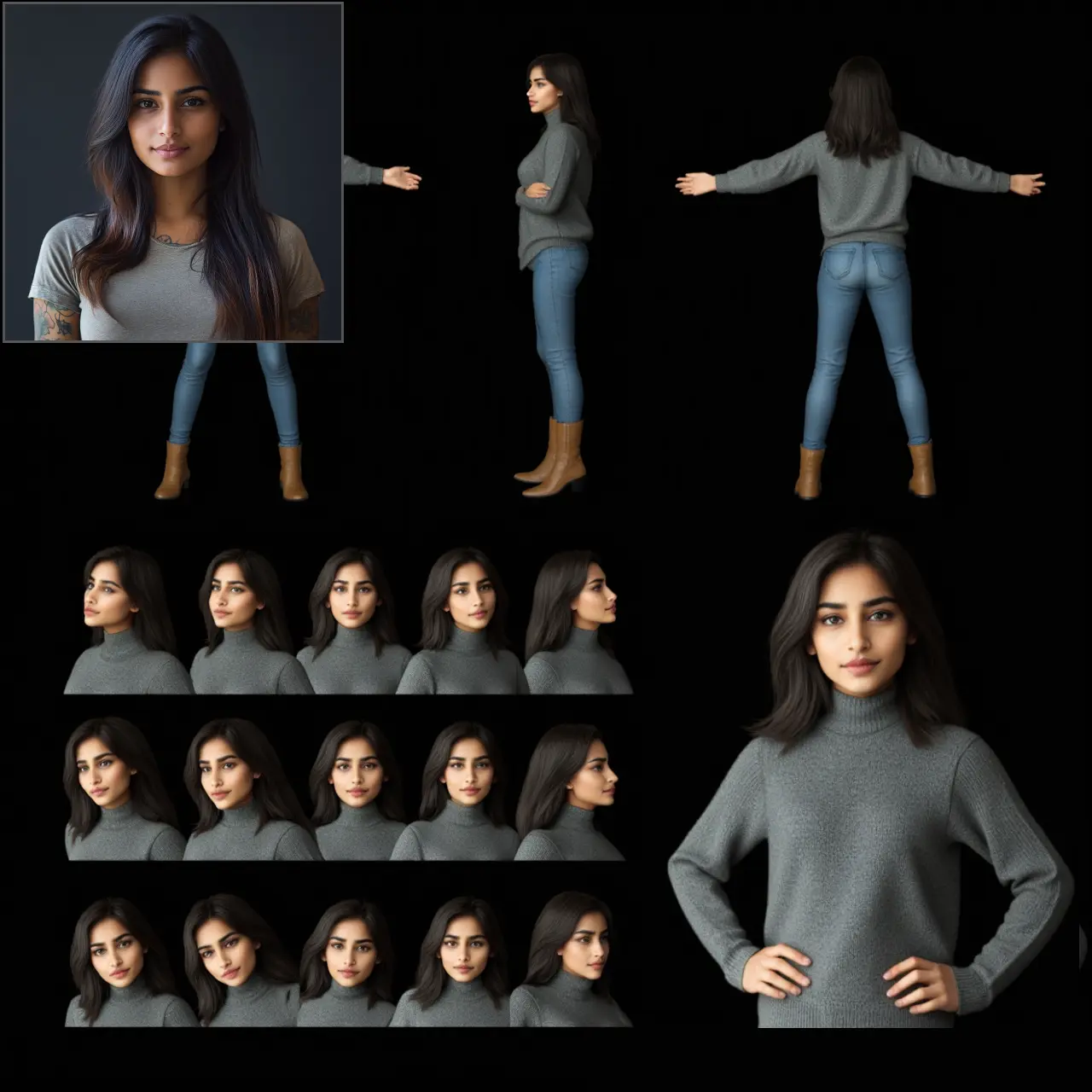ComfyUI Node: TripoSR Sampler
TripoSRSampler
CategoryFlowty TripoSR
flowtyone (Account age: 558days) Extension
ComfyUI-Flowty-TripoSR Latest Updated
2024-06-16 Github Stars
0.49K
How to Install ComfyUI-Flowty-TripoSR
Install this extension via the ComfyUI Manager by searching for ComfyUI-Flowty-TripoSR- 1. Click the Manager button in the main menu
- 2. Select Custom Nodes Manager button
- 3. Enter ComfyUI-Flowty-TripoSR in the search bar
Visit ComfyUI Online for ready-to-use ComfyUI environment
- Free trial available
- 16GB VRAM to 80GB VRAM GPU machines
- 400+ preloaded models/nodes
- Freedom to upload custom models/nodes
- 200+ ready-to-run workflows
- 100% private workspace with up to 200GB storage
- Dedicated Support
TripoSR Sampler Description
Generate detailed 3D meshes from 2D images using TripoSR model for AI artists, leveraging machine learning for high-resolution results.
TripoSR Sampler:
The TripoSRSampler node is designed to facilitate the generation of 3D meshes from 2D reference images using the TripoSR model. This node is particularly useful for AI artists who want to create detailed 3D representations from their 2D artwork or photographs. By leveraging advanced machine learning techniques, the TripoSRSampler can interpret the geometry and structure of the input image to produce a high-resolution 3D mesh. This process involves analyzing the image, optionally incorporating a reference mask, and applying a threshold to determine the level of detail in the resulting mesh. The primary benefit of using this node is its ability to transform flat images into intricate 3D models, which can be used in various applications such as 3D printing, virtual reality, and digital art.
TripoSR Sampler Input Parameters:
model
This parameter specifies the TripoSR model to be used for generating the 3D mesh. The model is a pre-trained machine learning model that understands how to convert 2D images into 3D structures. It is essential for the node's operation as it contains the knowledge required to perform the transformation.
reference_image
The reference_image parameter is the 2D image that you want to convert into a 3D mesh. This image serves as the primary input for the node, and its quality and content will significantly impact the resulting 3D model. The image should be provided in a format that the node can process, typically as a tensor.
geometry_resolution
This parameter determines the resolution of the generated 3D mesh. It is an integer value with a default of 256, a minimum of 128, and a maximum of 12288. Higher resolution values will produce more detailed meshes but will require more computational resources and time. Adjusting this parameter allows you to balance detail and performance based on your needs.
threshold
The threshold parameter is a floating-point value that influences the level of detail in the 3D mesh. It has a default value of 25.0, a minimum of 0.0, and can be adjusted in steps of 0.01. Lower threshold values will result in finer details, while higher values will produce a more generalized mesh. This parameter helps control the sensitivity of the mesh generation process.
reference_mask
The reference_mask is an optional parameter that allows you to provide a mask image to guide the mesh generation process. The mask can help the model focus on specific areas of the reference image, improving the accuracy and relevance of the resulting 3D mesh. If not provided, the node will process the entire reference image.
TripoSR Sampler Output Parameters:
MESH
The output of the TripoSRSampler node is a 3D mesh, represented as a MESH type. This mesh is a digital representation of the 3D structure derived from the input 2D image. It can be used in various applications, such as 3D modeling software, virtual reality environments, or for 3D printing. The mesh contains the geometric data necessary to visualize and manipulate the 3D object.
TripoSR Sampler Usage Tips:
- Ensure that your reference image is of high quality and clearly depicts the subject you want to convert into a 3D mesh. This will improve the accuracy and detail of the resulting model.
- Experiment with different geometry_resolution and threshold values to find the optimal balance between detail and performance for your specific use case.
- If you have a specific area of interest in your reference image, use the reference_mask parameter to guide the mesh generation process and achieve more precise results.
TripoSR Sampler Common Errors and Solutions:
"CUDA device not available"
- Explanation: This error occurs when the node attempts to use a GPU for processing, but no compatible CUDA device is available.
- Solution: Ensure that your system has a compatible GPU with CUDA support. If not, the node will default to using the CPU, which may be slower but will still function.
"Invalid geometry_resolution value"
- Explanation: This error occurs when the geometry_resolution parameter is set outside the allowed range (128 to 12288).
- Solution: Adjust the geometry_resolution value to be within the specified range to avoid this error.
"Invalid threshold value"
- Explanation: This error occurs when the threshold parameter is set to a value outside the allowed range (0.0 and above).
- Solution: Ensure that the threshold value is within the valid range and adjust it in steps of 0.01 if necessary.
"Reference image not provided"
- Explanation: This error occurs when the reference_image parameter is missing or not correctly specified.
- Solution: Provide a valid reference image in the correct format to ensure the node can process it and generate the 3D mesh.
TripoSR Sampler Related Nodes
RunComfy is the premier ComfyUI platform, offering ComfyUI online environment and services, along with ComfyUI workflows featuring stunning visuals. RunComfy also provides AI Playground, enabling artists to harness the latest AI tools to create incredible art.

